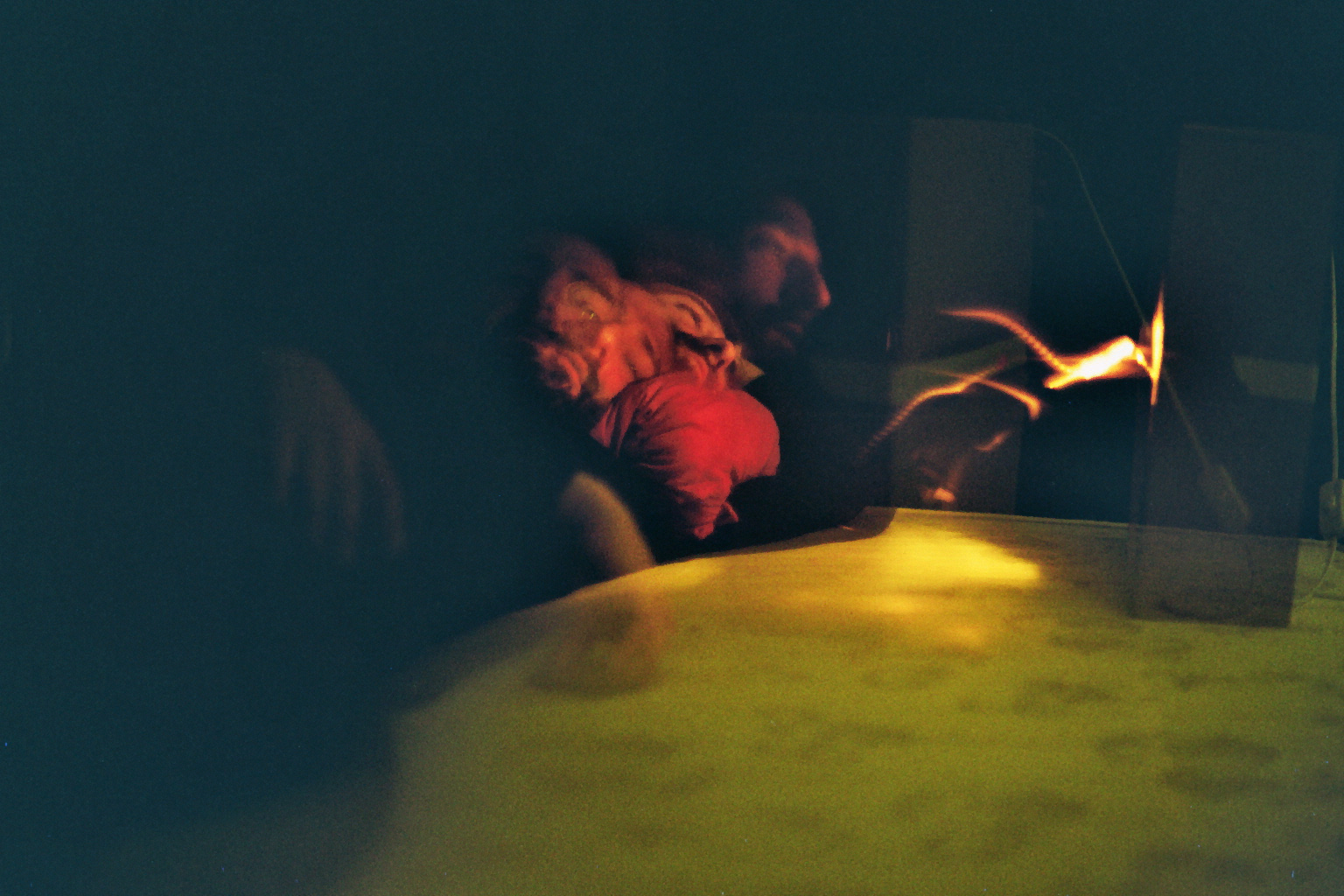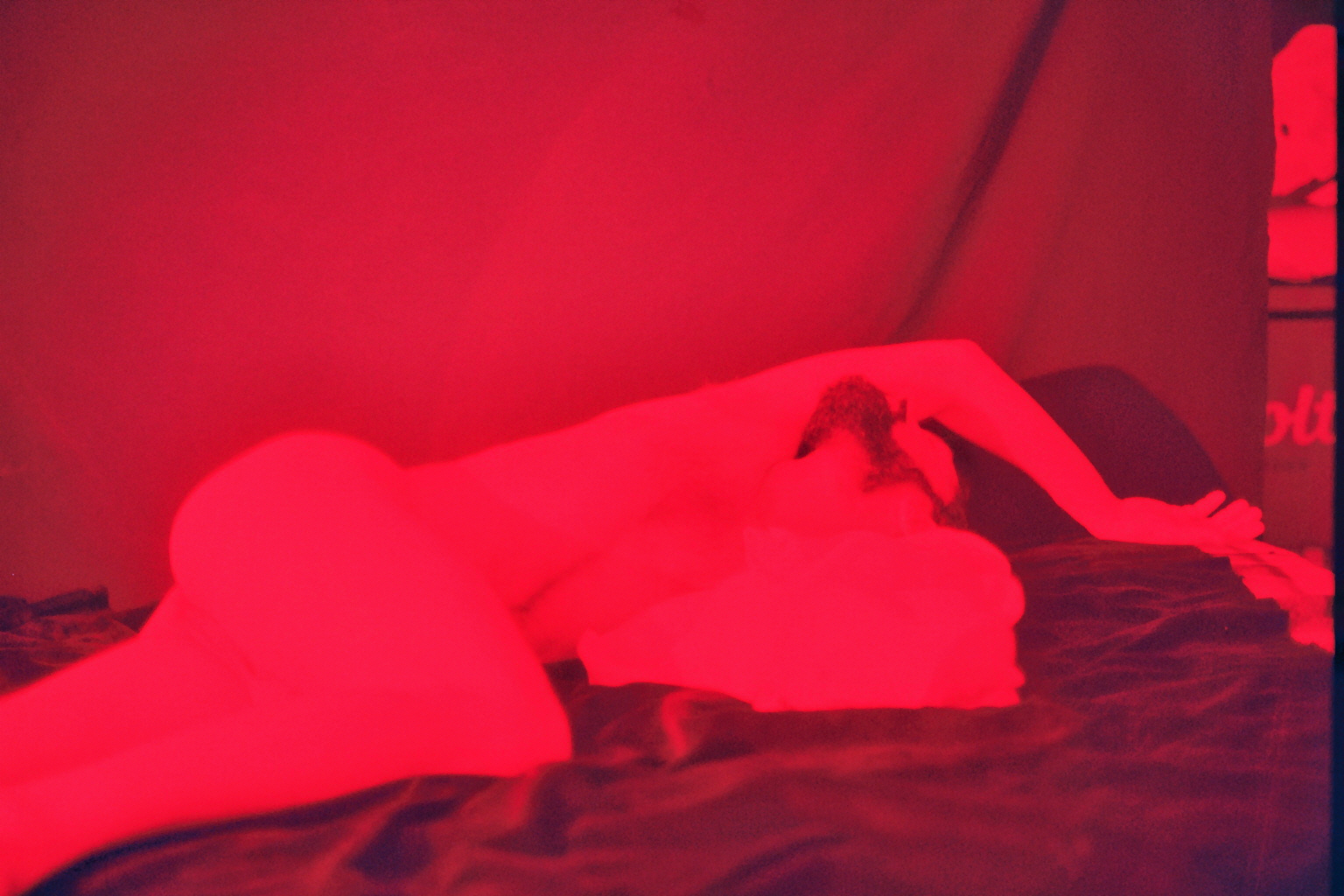The more automatic features we use on our cameras the more we accept a particular moral, which we reproduce as if the only one. To play against the camera is to say no to its program. Risk strange forms of beauty, propose a moral which makes sense to you, expose your idea of beauty. Images have texts hidden behind them, when we reproduce a fashion we reproduce a text, a particular inclination. Not to be aware of it shapes us internally, we absorb its text, its moral. In the other hand to challenge the automatic features can create a text and expose a authentic inclination. How to make photos that don't follow a particular aesthetic? That do not point to a text written by others? How can I have my own text hidden behind the image? Even if we don't control the text we are creating when avoiding the automatic features one thing is for sure, we do not copy a given text and we exercise new forms of relations. Imagination is our ability to create images, if we create images that obey a given fashion we lose our ability to imagine, or we only imagine towards a particular inclination. What can the photos review to us if we play against the camera?
"Reconnecting something unknown to something known relieves, reassures, satisfies, and gives, in addition, a feeling of power. Along with the unknown is given danger, restlessness, worry - the first instinct points to the elimination of these painful states.
First Principle: any explanation is better than no explanation. Because at bottom it is only a matter of wanting to get rid of distressing representations, one does not consider with the necessary exactness the means of producing such a movement. The first representation, with which the unknown is explained as known, does so well that it is "taken as true". Proof of pleasure "of force" as a criterion of truth.
The causal impulse is thus conditioned and provoked by the feeling of fear. If there is any possibility, the "why?" should not so much deliver the cause by virtue of itself, but rather deliver a kind of cause. - A cause that quiets, that liberates, and that makes lighter.
The first consequence of this necessity is the fact that something already known, experienced and inscribed in the memory as a cause is put in attachment. - The new, the un-experienced, the strange are excluded as cause. The search is not for just one kind of explanations as cause, but for a chosen and privileged kind of explanations that bring with them as quickly and as often as possible the extinction of the feeling of the strange, the new, the unlived: the most usual explanations.
- The consequence: a kind of positioning of the causes becomes more and more predominant; it systematically concentrates and finally shows itself as dominant, that is, it simply excludes other causes and explanations. - The banker immediately thinks of "business", the Christian of "sin" and so on."




Für eine Philosophie der Fotografie
Introductory note:
This book is based on the hypothesis that two fundamental turning points can be observed in human in human culture since its inception. The first, around the middle of the second millennium BC, can be summed up under the heading “the invention of linear writing. The second, the one we are currently experiencing , could be called “the invention of technical images”. Similar turning points may have occurred previously but are beyond the scope of this analysis.
The hypothesis contains the suspicion that the structure of culture -and there for existence it self- is undergoing a fundamental change. This book attempts to strengthen this suspicion.
Vilém Flusser interview 1989:
When alphabetical writing was invented 3500 years ago a total transformation of our, not only our experience, but even our action was involved. Before the invention of writing traditional images were used as maps for the world and the structure of images involved a specific way of looking at the world which is the mythical way.
Now when alphabet was invented mythical thought gave way to historical, critical thought because the structure of linear is a uni-dimentional, uni-directed line. So that by and by people started to think historicaly in a casual way (cause-efect) and in a critical way.
Now this line has been disrupted into points, now that DISCURSE has been substituted by CALCULUS.
Historical, progressive thinking is being abandoned in favor of a new type of thinking, which I would like to call, lets say, a systemic or a structural way of thinking.
So that I believe that we are present and witness to a revolution which can be compared to the one that gave origin to history (The alphabetical-writing one).
In my terminology I say that before the invention of writing people thought in a pre-historical way (circular time), after the invention of the alphabet, historical consciousness was elaborated and now we are in the process of elaborating a post historical, structural way of thinking.
Due to our Greek and Jewish tradition philosophy has a prejudice as far as images are concerned. It’s the prejudice that image is only a copy, a simulation of thought, so that either its forbidden to make images, or that images are accepted with a great distrust.
These new images they are not copies but projections, models, so a new attitude towards the image is necessary and I think its developing. Walter Benjamin was one of the first thinkers who articulated this and I believe that we are all in this tradition.
...
Every revolution, be it political, economic, social or aesthetic is in the last analyses a technical revolution.
If you look at the big revolutions though which mankind has gone, lets say the Neolithic revolution or the revolution of bronze age or the iron age or the industrial revolution, every revolution is in fact a technical revolution, and so is the present one, but there is one difference:
SO FAR TECNICHES HAVE ALWAYS SIMULATED THE BODY – FOR THE FIRST TIME, OUR NEW TECNICHES, SIMULATE THE NERVOUS SYSTEM. SO THAT THIS IS FOR THE FIRST TIME A RELLY IMATERIAL AND to use an old term SPIRITUAL REVOLUTION.
Originally man was immersed in his circunstence. Now, when homosapiens came about- he made a step back from the circunstence EIN SCHRITTE ZURÜCK and he tried to look at the circunstence from his subjective distance, and the resolt was a image. Now the image transform the world into a scene (like in the theater)
- though image the world has a character of a scene, it shows context- scene is a context in which things relate to each other.
Every image is strongly magicaly loaded . When the first images were made, lets say at Lascox, they were meant to orientate people in the world- how to hunt, for example. And when people were exposed to this images they probably danced, they made rituals, happenings and than they went out to hunt. It is absolutely impossible to see the image outside magic. There is a technical vudu.
Images create the possibility for me to step out of the world and see it from outside. They mean the world but by meaning the world they also hide it (the eternal problem of any language- a sign is always something replacing another, replacing the real thing)
In this post-historical era, that just started with the mass media, there is a magical mythical consciousness in the air, political reasoning is no longer planned.
There is no reality behind the image(how it used to be at the Lascaux), all the reality is IN the image, political reasoning does not apply to it, its no longer valid, it’s the resolt of magic, the resolt of technical voodoo.
How can we judge it? We do not have the criteria for it, we do not have a philosophy of post-history, we do not yet have A PHILOSOPHY OF THE IMAGE IN POWER.
Systems can be complex in two ways:
Structurally complex- the elements maintain a very complex relation with each other.
Functionally complex- if you use it you can use it in a complex way.
A structurally complex system may be functionally simple (a structure of almost impenetrable complexity but the use of it is extremely simple, like the TV).
A simple system like a chess game can have very complex functional manipulations.
It is a fact that functionally complex systems are a challenge to creative thought, whereas functionally simple systems are stultifying idiotic. Now the complex systems that now are coming about are complex in a structural way (smart phone- internet etc). Whether they will be functionally complex or not depend on us. For the time being those complex systems are being used for functionally simple uses, which is why the intellectual aesthetic and even ethic level of man kind is lowering. But this is not the fault of the system, it is the fault of the users of the system. We may, in time, learn how to give a functional complexity to these structures and this is what I am comitted to.
Für eine, first part, The image
Paragraph 1
Images are significant surfaces. Images signify, mainly, something “out there” in space and time that they have to make comprehensible to us as abstractions (as reductions of the four dimensions of space and time to the two of the surface dimensions). This specific ability to abstract surfaces out of the space and time and project them back into space and time is what is known as imagination. The ability to encode phenomena into two dimensional symbols and to read these symbols.
Magical images – linear writing – back to magical images
Für eine, first part, The image
Paragraph 2
Images are mediations between the world and human beings. Human beings ex-ist i.e. the world is not immediately accessible to them and therefore images are needed to make it comprehensible. However, as soon as this happens, images come between the world and human beings. They are supposed to be maps but they turn into screens: Instead of representing the world, they obscure it until human beings’ lives finally become a function of the images they create. Human beings cease to decode the images and instead project them, still encoded, into the world “out there”, which meanwhile itself becomes like an image, a context of scenes, of states of things. This reversal of the function of the image can be called Idolatry, we can observe the process at work in the present day. The technical images currently all around us are in the process of magically restructuring our ‘reality’ and turning it into a ‘global image scenario’. Essentially this is a question of amnesia. Human beings forget they created the images in order to orientate them selves in the world. Since they are no longer able to decode them, their lives become a function of their own images. Imagination has turned into hallucination.


Bom dia,
meu nome é Luiz Lopes, sou ator, diretor e professor. Estou regressando ao Brasil depois de 9 anos trabalhando com teatro e performance na Europa e amei a grade curricular de vocês. Trabalhei em uma Escola chamada Theaterhaus em Berlim, onde desenvolvi um trabalho solo, me apresentando em diversos teatros, criei um grupo de pesquisa e dei aula de voz, interpretação e corpo - assim como ministrei oficinas de criação no palco, corpo, voz e interpretação. Essas oficinas tem duração de um final de semana ou de um mês, podendo ser mais longa ou mais curta de acordo com as necessidades do local. Sou de São Paulo e tenho mais de 20 anos de experiência no palco, estudei artes plásticas na FAAP, teatro no INDAC e trabalhei no CPT diretamente com Antunes Filho de 2011 a 2015.
Gostaria de dar aula aí com vocês ou de oferecer minha oficina "o corpo criativo". My best
Luiz
https://luizlopes.de/?page_id=640
PROPOSTA DE OFICINA
Aberto a profissionais e/ou amadores de 16 a 90 anos, interessados por teatro contemporâneo e suas expressões adjacentes como dança e performance.
A metodologia:
O corpo criativo é uma oficina onde nossas manias e padrões de comportamento são desligados e, desse estado sensível e sem função clara, surgem os potenciais negligenciados de nossa expressividade, tanto física como emocional. A oficina aponta para, primeiro, a liberação desse estado criativo fértil, segundo, as qualidades de signo que o corpo pode adquirir e como podemos compor algo coerente com elas.
Aquecimento e sensibilização do corpo através dos seguintes exercícios:
1 - Alongamento
2 - Trabalho de expansão e compressão 3 - O corpo que treme
4 - As juntas torcidas
5 - Caretas e deformações
6 - O corpo geleia
-Esses
um estado onde os impulsos e formas não obedecem a uma função pré-estabelecida.
exercícios têm como foco a disfuncionalidade, colocar os performers em
-Os integrantes entrarão em contato com o corpo amorfo, isto é, sem forma prévia,
sem função mecânica ou social, estado onde os impulsos estão na frente dos
julgamentos.
-O workshop segue com exercícios práticos claros e culmina em um encontro
coletivo, em um chá.
-O chá, atividade lógica com função e finalidade, acaba por revelar as
possibilidades criativas negligenciadas, ou seja, tudo que pode acontecer fora da lógica de causa e efeito, é um método de criação que tem o meio (no caso o
corpo) como ponto zero.
-O workshop acontece em cinco encontros de 4 horas cada. (isso pode ser modificado) Ao final desses cinco encontros o grupo apresenta o resultado da
experiência, uma performance de cerca de 30 min aberta ao publico.
PENSANDO EM DISFUNCIONALIDADE
Agente está acostumado a usar o corpo sempre dentro de uma estrutura econômica. O trabalho molda nosso corpo e mesmo as relações sociais são moldadas pelo trabalho. Na hora da criação também temos dificuldade em seguir os impulsos do nosso íntimo e operamos dentro de uma lógica de causa e afeito ao invés de acessar formas mais fortes de criação. Dentro das relações de trabalho é natural que não possamos ser criativos, mas isso não é desculpa pra nos evitarmos e ficarmos só na camada funcional da vida. Pois então, nosso corpo se reduz, na maior parte do tempo, ao desempenho de funções objetivas e nós ficamos presos nessa camada óbvia, talvez por medo ou por falta de espaço pra exploração, mas no palco, dentro da criação artística, isso não pode acontecer, temos que libertar essa potência criativa para além do que é lógico e racional. Nosso corpo também é corpo do acaso, do ócio, do prazer, da curiosidade, da exploração, da criação, até da crueldade. Todas essas necessidades são sistematicamente ou rejeitadas ou até ridicularizadas, como se nossas vidas se reduzissem à atividades funcionais. O corpo criativo é um corpo que explora as formas e o espaço sem um objetivo funcional. Ele é um corpo autônomo em relação à economia, ou em outras palavras, não está subordinado à ela. Sua função é descoberta por ele mesmo e não dada de fora. Brincar com nossos impulsos é mexer com uma memória ancestral e revelar ideias e forças que nos habitam, coisas que estão dentro da gente e nós nem percebemos, um canal pro inconsciente e pro atemporal. Isso não pressupõe negar as atividades econômicas e as regras que vêm com elas, apenas
revela essas potências para nos munir de ferramentas criativas.
https://luizlopes.de/?page_id=640